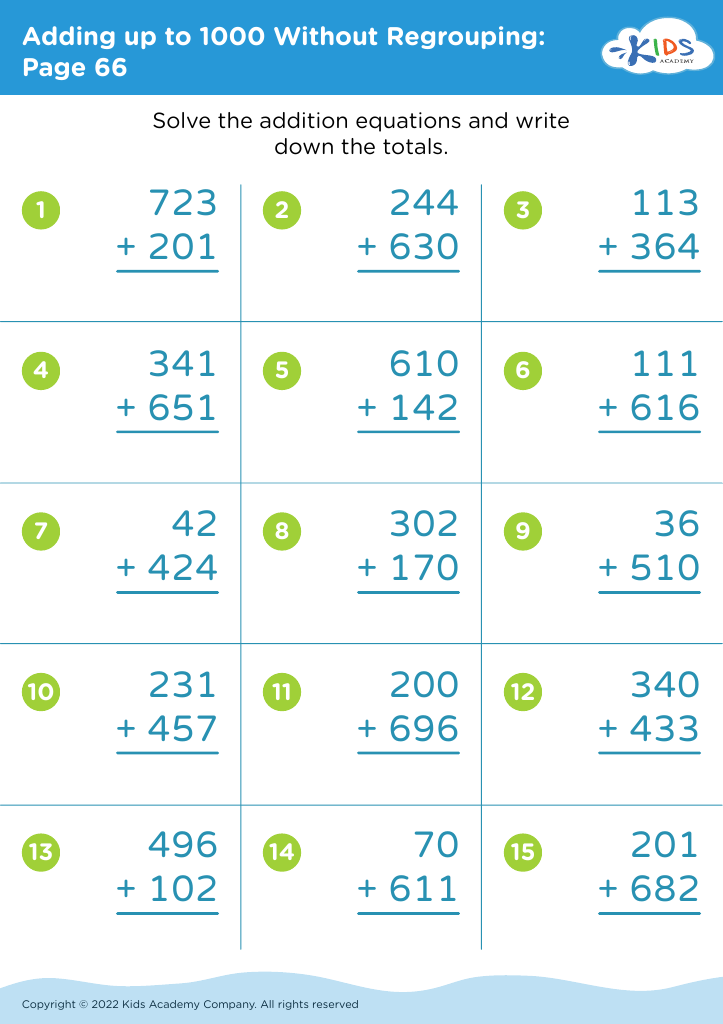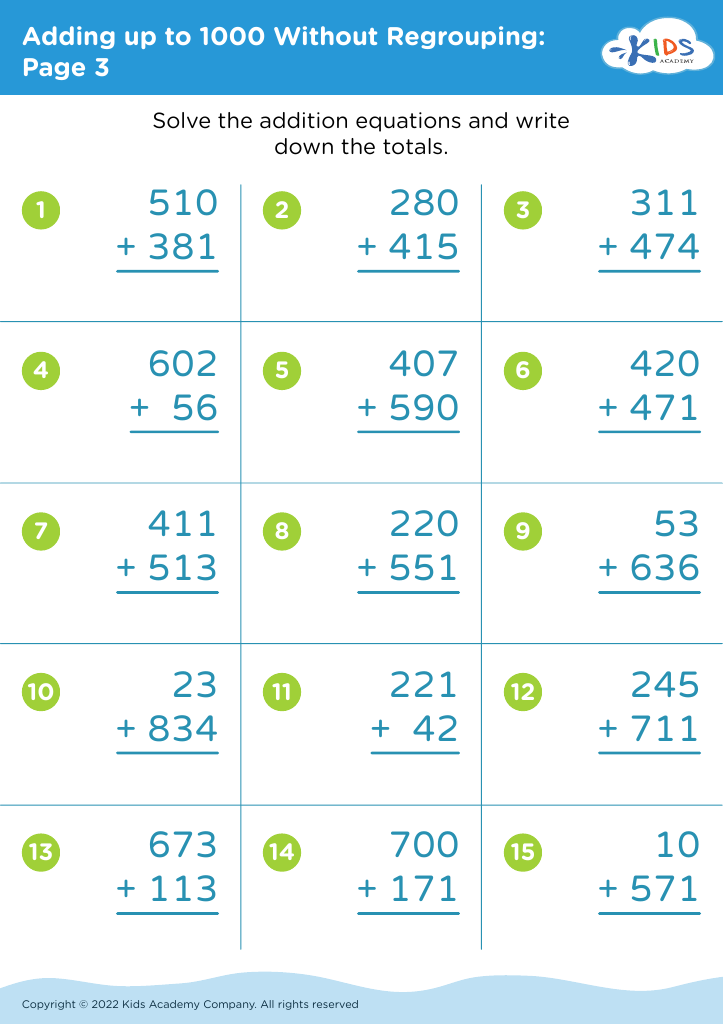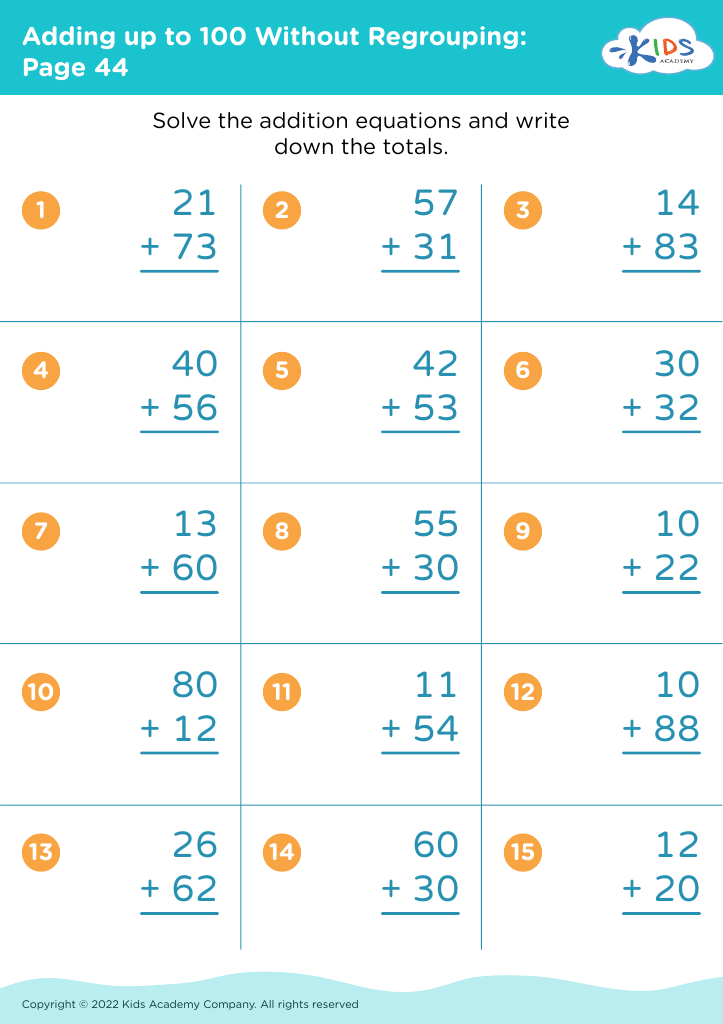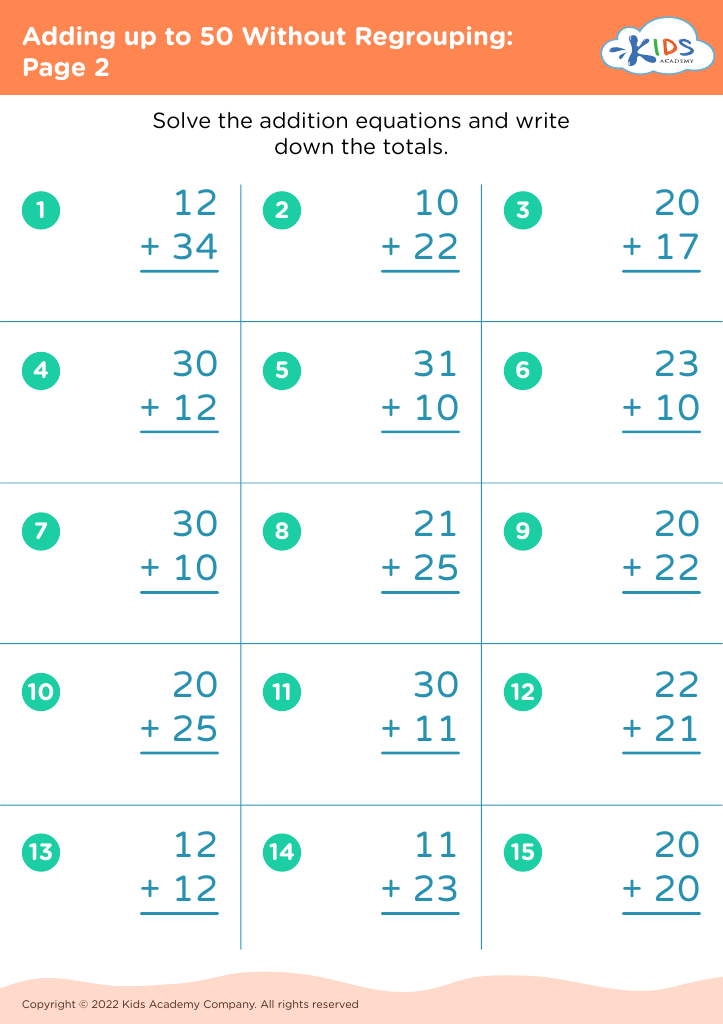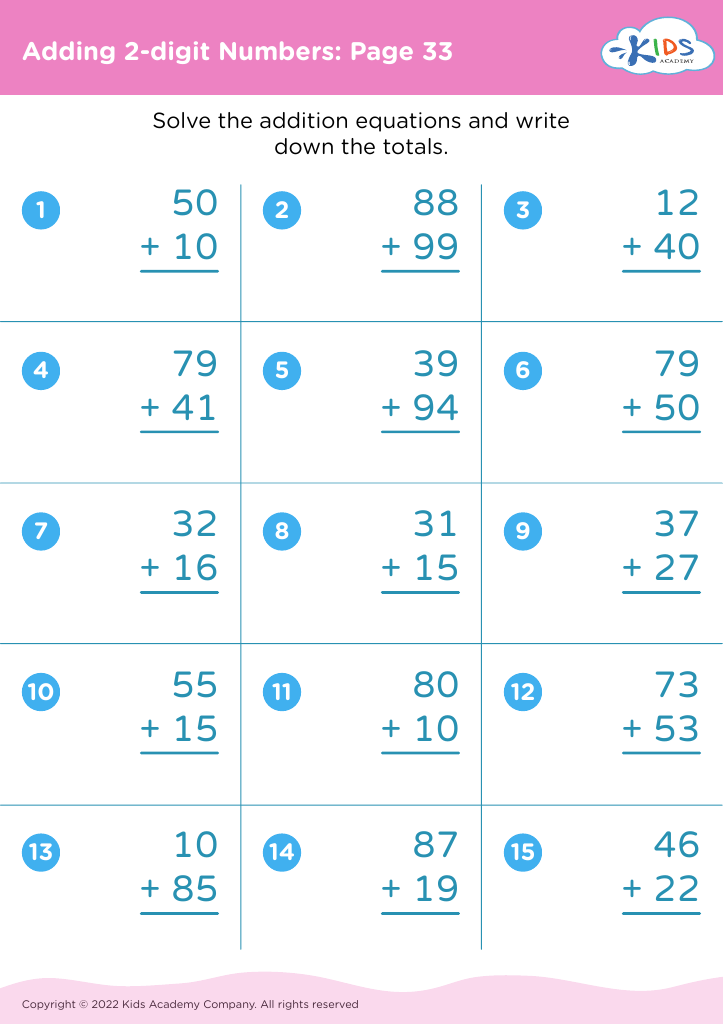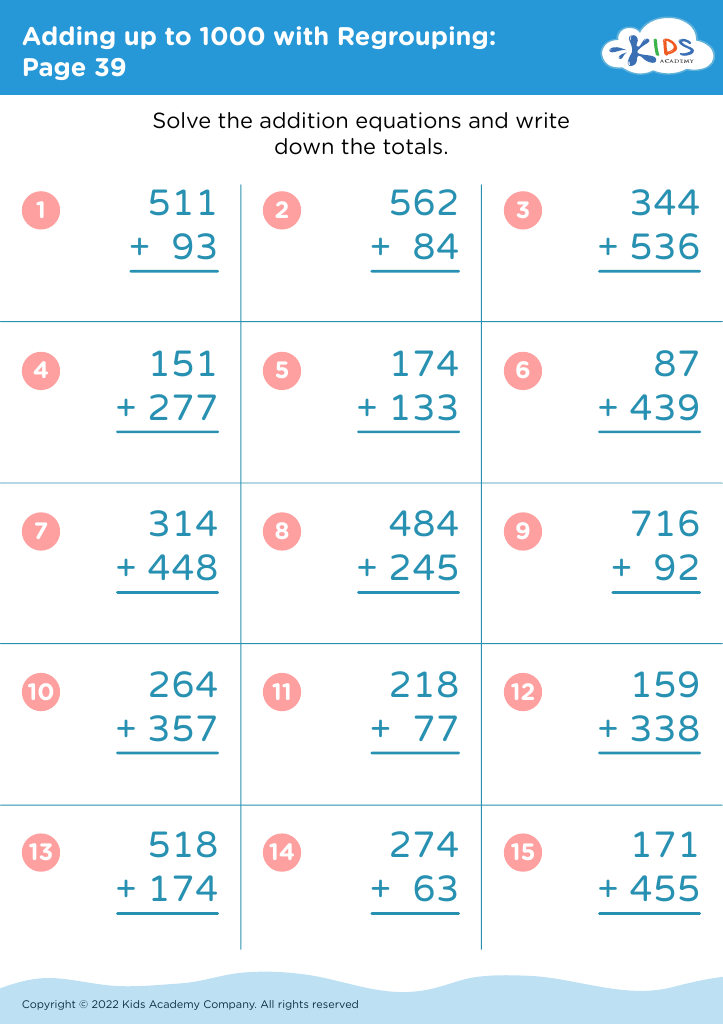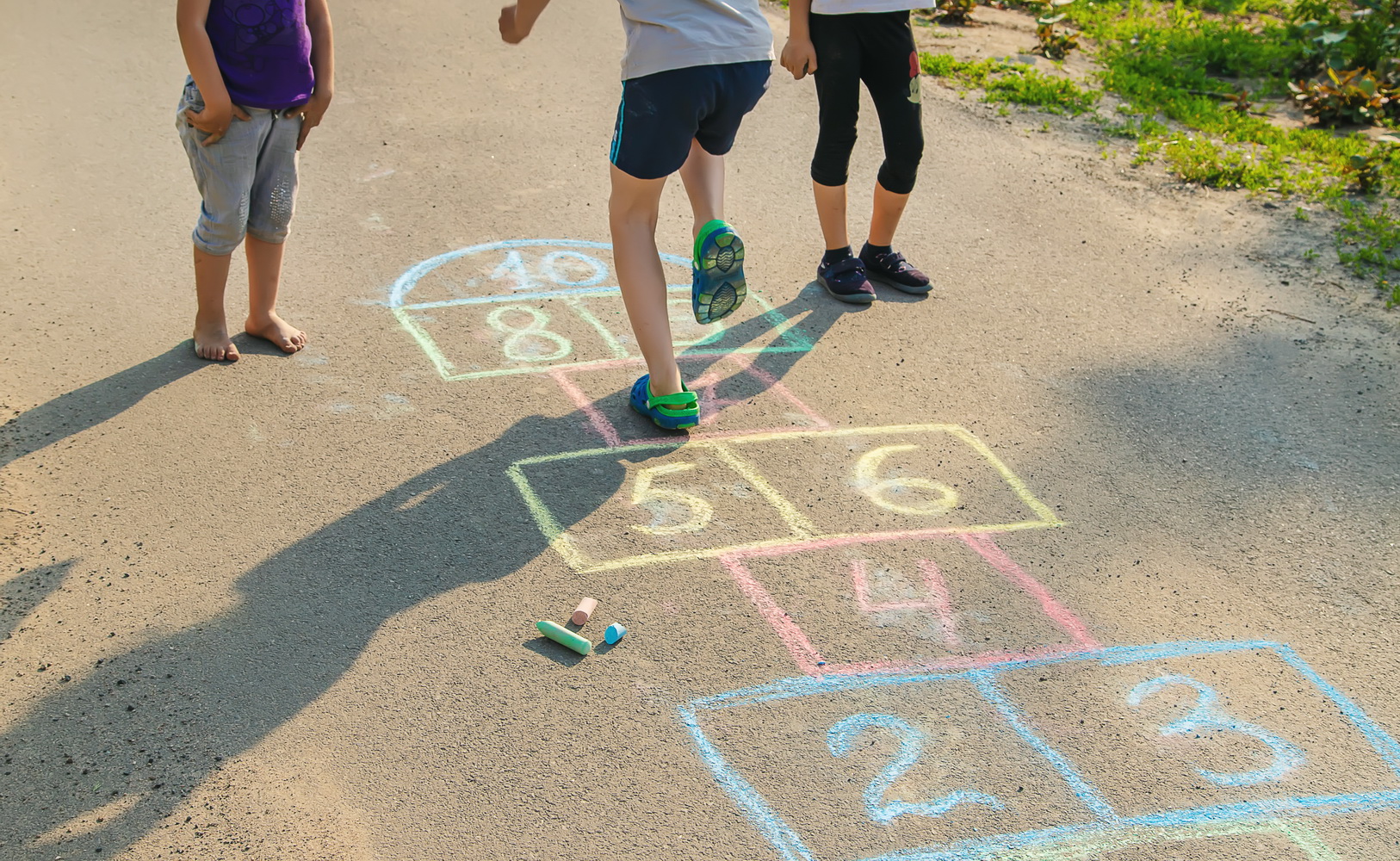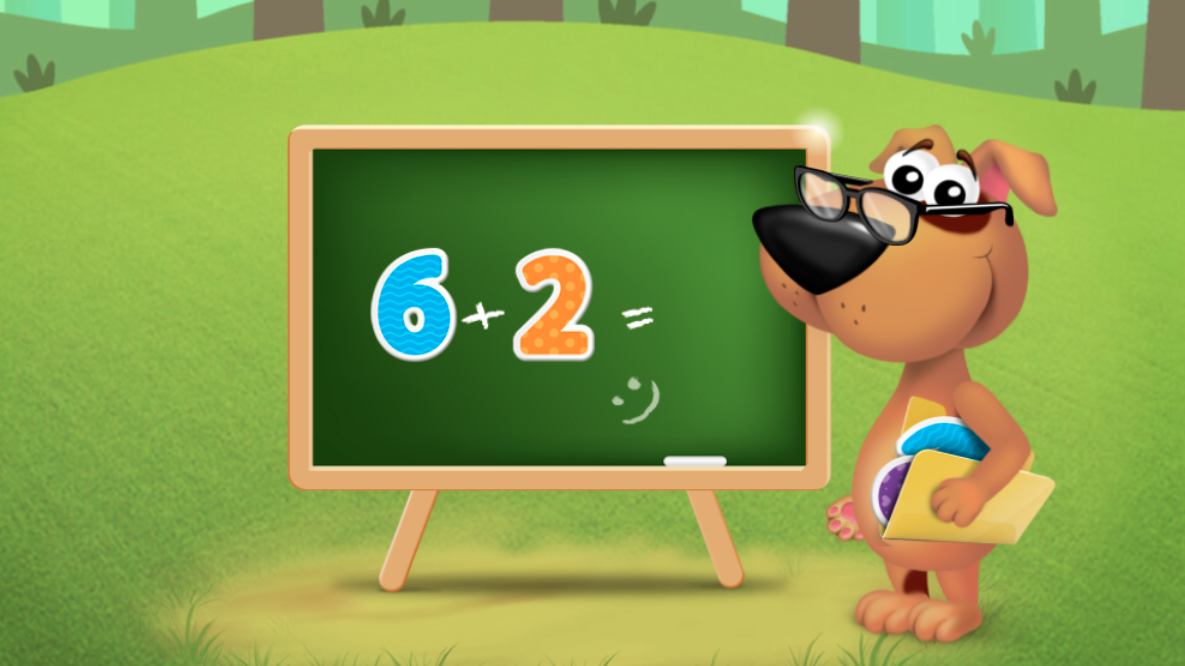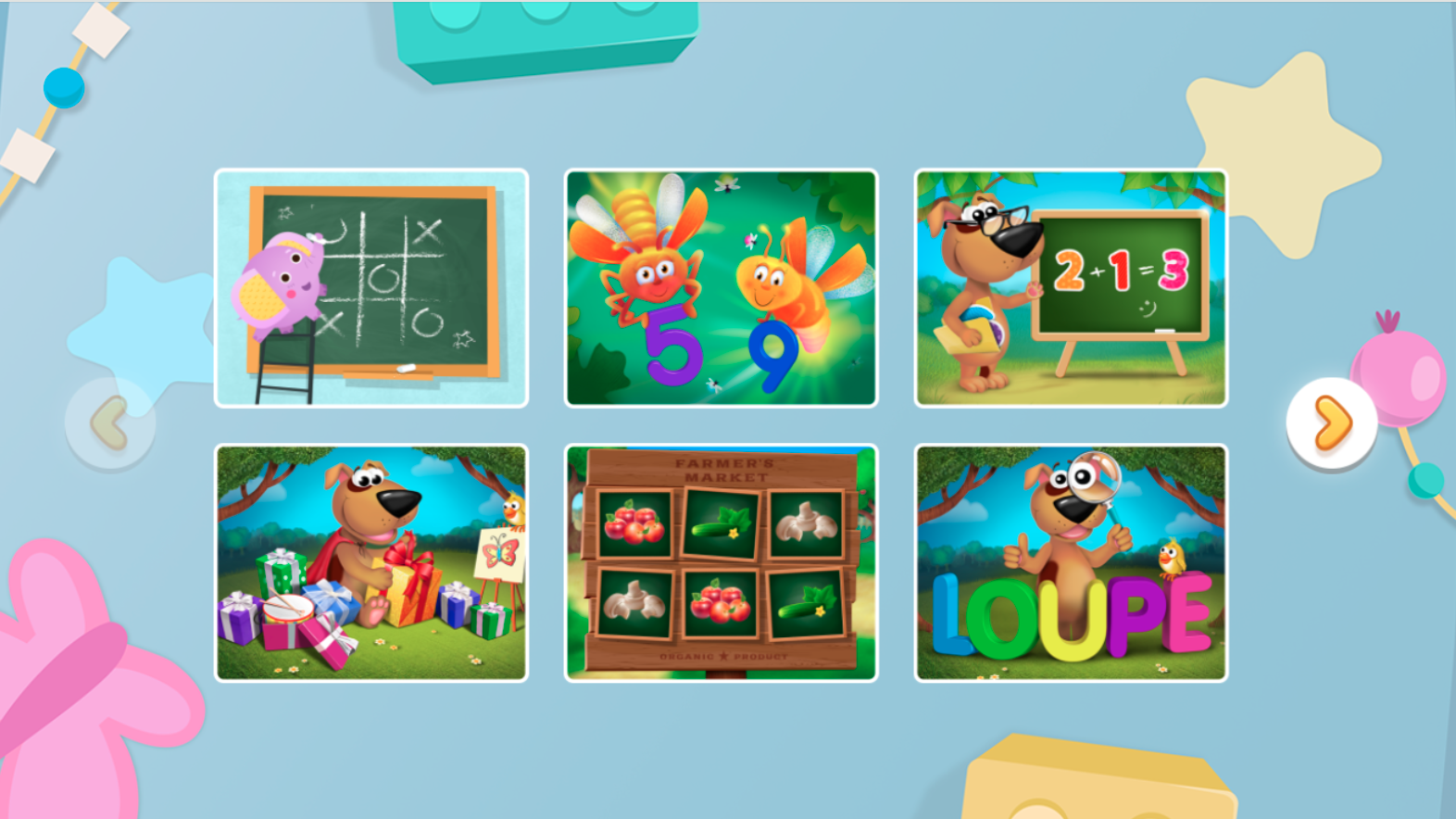Understand patterns Addition Worksheets for Ages 8-9
6 filtered results
-
From - To
Enhance your child's math skills with our "Understand Patterns: Addition Worksheets" designed for ages 8-9. These engaging, printable worksheets from Kids Academy help young learners recognize, interpret, and create mathematical patterns through addition exercises. With fun challenges and vibrant visuals, children will develop critical thinking and problem-solving abilities essential for mastering math concepts. Suitable for classroom and home use, our worksheets offer a comprehensive approach to making math enjoyable and accessible. Empower your child today by downloading our expertly crafted addition worksheets and watch their confidence soar as they navigate the exciting world of mathematical patterns.
Understanding addition patterns is fundamental for children aged 8-9 because it forms the groundwork for more advanced mathematical concepts and critical thinking skills. At this stage, children are developing their number sense and fluency in basic arithmetic, which are crucial for tackling higher-level math in the future.
Recognizing patterns in addition helps children to memorize basic math facts and makes the process of addition smoother and quicker. When children can identify and predict these patterns, such as sequences in numbers or sums that result from adding the same number, they build strong mental math capabilities. This reduces cognitive load, allowing them to focus on more complex problem-solving tasks.
Moreover, recognizing patterns in addition aids in the development of logical reasoning and analytical skills. It encourages students to look for structures and regularities within math problems, which is a stepping stone to algebraic thinking. For example, understanding why adding two odd numbers always results in an even number can lead to deeper number theory insights.
For teachers and parents, supporting children in grasping these patterns means providing a strong mathematical foundation. Engaging in activities that reinforce these concepts can stimulate interest and confidence in math, leading to academic success and an ongoing curiosity in the subject.
